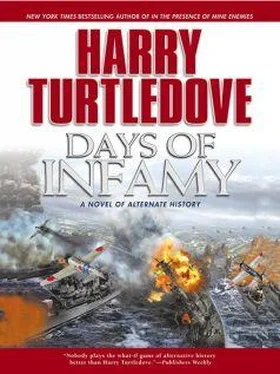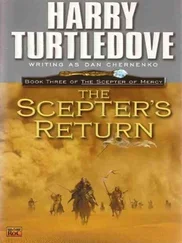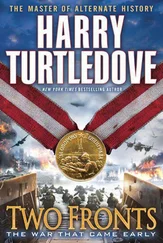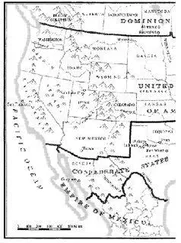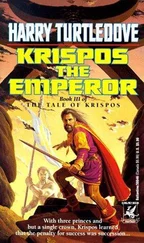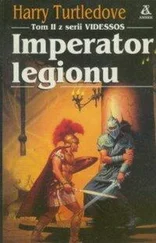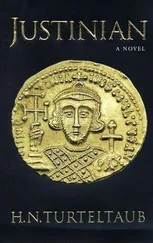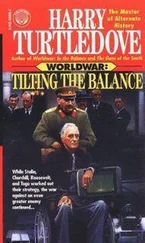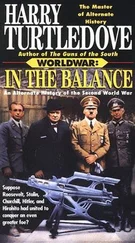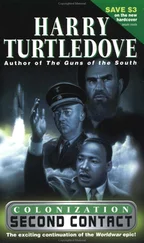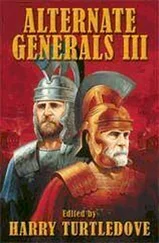He admired the Yankees’ nerve. They’d got everybody on Oahu jumping like fleas on a hot plate. Including me, he thought sourly. He still hadn’t figured out how they intended to get picked up. He couldn’t believe they’d be able to land on a carrier, even if they’d left from one. Would they ditch in the ocean and trust to luck? That seemed to stretch trust further than it ought to go.
“There, Lieutenant!” An excited voice in his earphones made him stop puzzling over it. “Isn’t that them, about ten o’clock low?”
“ Hai.” Shindo, by contrast, sounded perfectly calm. He estimated the American bombers’ course and radioed it back to Oahu. It might help the Japanese carriers and their planes find the ships that had launched the B-25s. That done, he said, “Now we make them pay.”
It wouldn’t be easy. They had scant daylight left. And the bombers had seen them, too. The B-25s dove for the deck. They had a very fair turn of speed. They weren’t as fast or as maneuverable as the Zeros (nothing was as maneuverable as a Zero except the Japanese Army’s Hayabusa fighter, which was much more lightly armed), but they didn’t dawdle.
They also showed they had teeth. The machine gunners in their dorsal turrets blazed away at Shindo and his comrades. And those were heavy machine guns. A Zero must have got in the way of a few rounds, for it tumbled into the Pacific trailing smoke and flame. One reason Zeros were so fast and maneuverable was that they were lightly built. When they got hit, they paid the price.
Shindo chose a B-25. He gave it a burst from his own machine guns. Those were just rifle-caliber weapons. He made hits. He was sure of that. But the bomber kept flying as if nothing had happened to it. Sturdy construction and armor plate might make a plane slow and sluggish, but they too had their advantages.
Another Zero cometed into the sea. Shindo swore. Who was supposed to be shooting down whom? He brought another bomber into his sights. This time, he opened up with his twin 20mm cannon. A couple of hits from them would knock anything out of the sky. Getting the hits was the problem. They fired none too fast and carried only a limited store of ammunition.
Get in close, he thought. That was the fighter pilot’s number-one rule. Get in close enough and you couldn’t miss. Shooting at long range was the most common and worst mistake novices and bad pilots made. Once the enemy filled your windshield, you didn’t scare him when you opened up. You killed him.
The Americans knew that as well as Shindo did. Tracers streaked past his Zero. But they had to aim guns in turrets, which wasn’t easy. He pointed his fighter’s nose at the B-25 and started shooting. Chunks flew from the bomber. For a long, dreadful moment, he thought it would keep going all the same. But it heeled over and smashed down into the ocean. Even then, though, it left only an oil slick, not a floating patch of fire like a Zero. Another place the Yankees added weight was in self-sealing fuel tanks that really worked.
Three more B-25s-and another Zero-went into the Pacific before Shindo broke off the attack. If he and his comrades were going to get back to Oahu with any light in the sky, they had to turn south now. The bombers kept on heading northeast, as if they intended to fly to California. They couldn’t get there, though. Shindo wondered again what they did intend to do.
As he made for Oahu, he also wondered if he’d pursued too long. And then he saw that the groundcrew at Haleiwa had lit up the airstrip with parked cars and trucks and a searchlight that had stood in front of a movie theater. His landing was a long way from elegant, but he made it.
A groundcrew man with a flashlight guided him to a revetment. He killed the motor, leaped out of his Zero, and ran for the radio in the headquarters tent. He wanted to find out whether carrier-based aircraft could catch the enemy’s ships.
Other pilots came to listen with him. A couple of hours later, they got a nasty jolt. Instead of the Japanese finding the American carriers, a U.S. sub found the Soryu. The Yankees must have hoped the Japanese would charge after them, hoped and had submarines lying in wait. Now Shindo listened anxiously, fearing the carrier would sink. Not till after midnight was it plain the ship would survive. Two torpedoes had struck her, but only one exploded. Had they both… But they hadn’t, and the Soryu limped back toward safer waters.
With her came the Akagi. There would be no pursuit of the U.S. raiders after all. However they intended to recover their planes and crews, they could go ahead and do it.
DOOLITTLE RAIDS HAWAII! THE NEWSPAPER HEADLINES SCREAMED. TAKES JAPS BY SURPRISE! Only when you got to the fourth paragraph of the story did you discover that six of his sixteen B-25s had been shot down. The rest of what was in the paper was a paean to the heroism of the crews that had been rescued after they ditched in the Pacific-and, in slightly smaller measure, to the heroism of the destroyer crews that had done the rescuing.
Joe Crosetti understood that. Like every cadet at the Pensacola Naval Air Station, he wished he’d been along with Jimmy Doolittle and his intrepid flyboys. He was sick-jealous of the fliers, as a matter of fact. How horribly unfair that they’d got to go and he hadn’t! Just because they’d been flying for years while he was only now beginning to get up in the air…
That they’d lost more than one plane in three and about one man in two (for several crewmen had been shot even on B-25s that kept flying to the ditching point) fazed him not at all. It hadn’t fazed them either. They were all volunteers. The papers made that very plain. He couldn’t imagine anybody in the country who wouldn’t have stepped up to the plate there.
He burbled about the attack standing on the runway next to the Boeing Stearman he’d soon be taking up. Like all Navy trainers, the tough little biplane was painted bright yellow so nobody could mistake it for anything but what it was. People not training in Stearmans called them Yellow Perils, not altogether in jest. They were dangerous to their pilots and dangerous to those around them.
“If you will bring yourself back from the Hawaiian Islands to the business at hand, Mr. Crosetti…” said the instructor, a lieutenant from Pittsburgh named Ralph Goodwin.
“Uh, yes, sir. Sorry, sir.” Joe wasn’t the least bit sorry. “Can you imagine the look on the Japs’ faces when we buzzed ’em?”
Goodwin had cool blue eyes and a manner that spoke of money. “Can you imagine the look on your face when I give you a downcheck for wasting your time-and mine?”
“No, sir,” Joe said quickly.
“All right, then. Why don’t you hop on in? We’ll run through the checks.”
“Aye aye, sir.” Joe scrambled up into the Stearman’s rear seat. It went up and down like a barber chair, to adjust to trainees of different heights. The man who’d taken the plane out last must have been big, because Joe had to raise it three or four inches. He clipped the parachute pack to the flying harness.
Lieutenant Goodwin, meanwhile, had taken his place in the front seat. “You squared away there?” he asked.
“Uh, just about, sir.” Crosetti reached up and adjusted the mirror attached to the upper wing. He might have been fooling with the rear-view mirror on a car somebody else had been driving. When he got it fixed the way he wanted it, he said, “All ready now.”
“Okay. Let’s run through the checklist, then,” Goodwin said.
“Right.” Joe hoped he hid his lack of enthusiasm.
By the way the instructor snorted, he didn’t hide it well enough. “You do this every time you plop your fanny down in an airplane, Mister-every single time. The one time you forget, the one thing you forget, will always be the one you wish you hadn’t. A Stearman’s a very forgiving plane-you can do a lot of things that’d send you home in a box if you tried ’em in a hotter machine. But no airplane ever made will forgive out-and-out stupidity. And even if you don’t feel like running through the checks, I do-’cause it’s my neck, too.”
Читать дальше
